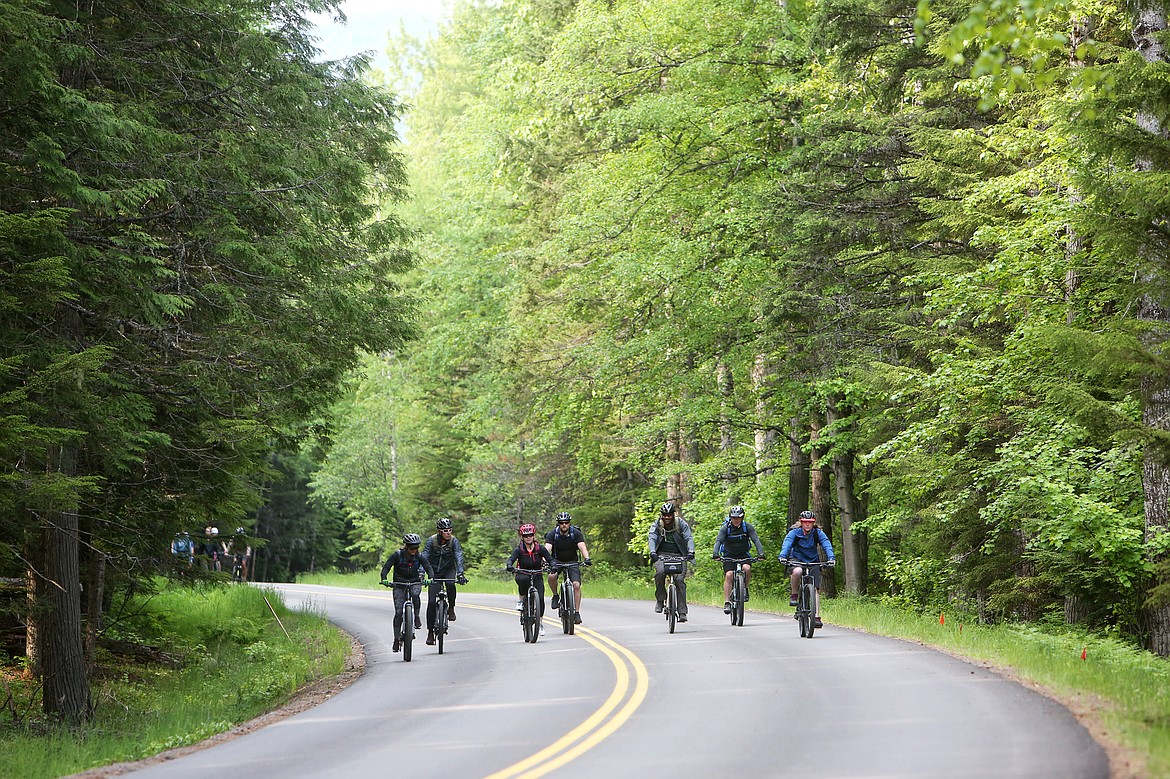Sun Road could get makeover along Lake McDonald
CHAD SOKOL | Hagadone News Network | UPDATED 5 years AGO
The U.S. Department of the Interior has proposed rebuilding a 9.3-mile stretch of Going-to-the-Sun Road and replacing a bridge over McDonald Creek in Glacier National Park, among hundreds of other maintenance projects on federal lands.
If Congress approves funding for the project, the iconic road would be rebuilt from the south end of Lake McDonald to the intersection with North Lake McDonald Road, according to a list of proposals the Interior Department announced last month. The project would involve widening and banking curves to improve drivability.
The department also proposed replacing a bridge over upper McDonald Creek that provides access to some residences and a ranger station.
"This project will demolish the existing bridge and replace it with a 270-foot-long, clear-span, highway-rated bridge," the department said in its proposal.
Going-to-the-Sun Road has undergone numerous repairs over the years, including pavement preservation work between Avalanche and Logan Pass in 2019. The Interior Department did not include cost estimates for the two proposed projects in its public announcement last month.
Funding for deferred-maintenance projects, such as those proposed in Glacier, would come from the Great American Outdoors Act that was signed into law last summer.
The landmark legislation also permanently funds the Land and Water Conservation Fund at $900 million per year with royalties from offshore oil and gas drilling. But the Interior Department has proposed to spend only a fraction of that amount, frustrating conservation advocates.
The department's list of proposed LWCF projects includes 20 projects under the U.S. Fish and Wildlife Service and 26 under the National Park Service, all totaling about $96.5 million. That would leave about $803.5 million on the table for public land.
In a news release, the department said "a team of career employees who are technical experts in facility management, construction, budget and related fields spent several weeks conducting an intensive and detailed review of the proposed project lists across all Interior bureaus. The team narrowed the list down to projects that would have the greatest overall impact on reducing the agencies’ maintenance backlogs while also benefiting the American people."
THE DEPARTMENT’S list does not include any proposed LWCF projects under the Bureau of Land Management. The BLM oversees more than 245 million acres, but a recent order from Interior Secretary David Bernhardt's order put the agency last on the priority list for LWCF projects.
Bernhardt's order, which may be reversed under the incoming Biden administration, also prohibits federal land acquisitions outside existing boundaries and requires acquisitions to be approved by both county governments and states' governors. The order drew criticism from Montana's senators – Democrat Jon Tester and Republican Steve Daines – both of whom sponsored the Great American Outdoors Act.
"Sen. Tester is pleased to see funding proposed for Going-to-the-Sun – it’s part of why he fought for GAOA in the first place – but he remains frustrated that Interior has taken so long to provide even basic details of how it proposes to allocate funding," Tester spokesman Roy Loewenstein said in an email.
The Senate Appropriations Committee proposed its own, longer list of LWCF projects – which would use all of the available $900 million – after the Interior Department missed a Nov. 2 deadline set forth in the Great American Outdoors Act. The department submitted its list to Congress a week late and without detailed funding requests, angering Democratic lawmakers.
The Appropriations Committee bill would provide $39.3 million for LWCF projects in Montana, including in the Miller Lake valley, the Kootenai Forestlands, Bad Rock Canyon, Lolo trails and national wildlife refuges, and on the Lower Musselshell River and the Blackfoot River watershed.
"The Senate bill doesn’t include specific deferred-maintenance projects, but indicates that the committee is watching the agencies’ proposed allocations closely to make sure investments are going to the highest-priority projects, like Going-to-the-Sun," Loewenstein said.
Loewenstein said the appropriations process is "inching forward" and a spending bill needs to be passed by Dec. 11.
Reporter Chad Sokol can be reached at 758-4434 or [email protected]
ARTICLES BY CHAD SOKOL
Forest Service approves large project near Tally Lake
Forest Service approves large project near Tally Lake

State seeking public input after purchase of Somers Beach
The Montana Department of Fish, Wildlife and Parks said Thursday it has completed the purchase of a 106-acre swath of land on the north shore of Flathead Lake.

County approves bid for new animal shelter building
The Flathead County commissioners on Tuesday awarded a $446,900 contract for the construction of a new multipurpose building at the county's animal shelter.

